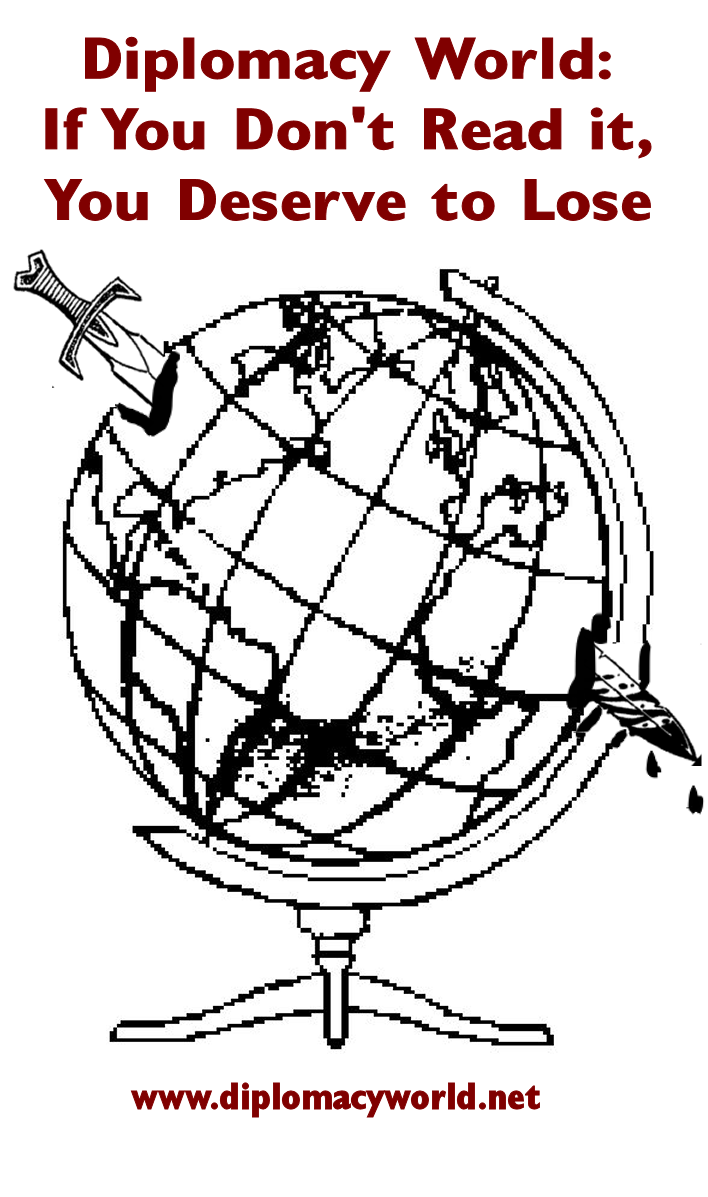



Disease: Colonial Diplomatic Developmentitis.
TestSubject: Name withheld. Shall be referred to as TestCase #2.
There have been many symptoms stemming from this new and unknown disease. One of the most prolific is the Railroad Blues, or what we call, "I'm here, He's there, How did he go over there?". This Testcase shows this symptom and it is in an advanced stage.
The Trans-Siberian Railroad, [TSR], adds new dimensions to playing Russia in a Diplomacy game. The TSR stretches through 6 provinces, from Moscow to Perm to Omsk to Krasnoyarsk to Irkutsk to Vladivostok. The Russian player can move one army unit along the TSR per turn. The following rule section has been reprinted from the published rulebook.
9.2 The Trans-Siberian Railroad (TSR) runs from Moscow to Vladivostok and allows for rapid mobilization of Russian army units across the vast Russian continent (i.e., it allows army units to move more than one province in a turn). The following rules govern its use.
9.21 This is an additional order which may be used by the Russian player and is designated "TSR" on the order sheet. This designation is placed between the names of the starting and finishing provinces. Thus an army in Moscow intending to move to Irkutsk would have orders " A MOS-TSR-IRK".
9.22 Only one unit may use the TSR per turn.
9.23 A unit using the TSR may only be transported to an unoccupied province. It may not perform any other function that turn (i.e., it may not attack an occupied province or give support to any other province). For example, an army in Moscow wishing to support a unit in Vladivostok or attack an enemy unit there, would have to move to Irkutsk on one move and then support or attack Vladivostok next move.
9.24 A unit may travel as far as it is allowed to go along the TSR according to the normal rules of conflict.
9.241 Thus if any other major power has a military unit in a province along the line of the TSR a Russian unit would have to stop in the nearest empty province along the line of the railroad before the enemy-occupied province. For example, with a Chinese army in Krasnoyarsk, a Russian army starting in Moscow could travel only as far as Omsk.
9.242 However, if two equal forces attack a province on the TSR resulting in a standoff, the TSR order is not disrupted and the Russian order would go ahead. (The same situation as having to dislodge a fleet in order to stop a convoy order.)
9.25 If a foreign power attacks a province on the TSR, to which or through which a Russian unit had been ordered to move, this would result in a standoff and neither unit would enter that province (unless the attacking unit had support). The Russian unit would stop in the nearest empty province along the line of the railroad. Example - RUSSIAN: A MOS-TSR-VLA, CHINA: A MON-KRA.
This constitutes an equally well supported attack into Krasnoyarsk and the Chinese piece would stay in Mongolia and th Russian army would end its turn in Omsk. If there was another unit in Omsk the unit would have to remain in Perm.
9.26 A unit using the TSR may receive support to enter an empty province along the line of the TSR, to stop a standoff as occurred in the above example. Example - CHINA: A MAC-IRK, RUSSIAN: A MOS-TSR-IRK, A VLA S A MOS-IRK. The Russian army in Moscow moves to Irkutsk.
9.27 The presence of a Russian army unit on the line of the TSR does not block its path. A unit using th TSR may pass through a province occupied by a Russian unit as long as it doesn't end its movement in that province.
These rules are very well written, but a few situations might need some clarification for some of us. I consulted Dr. Peter Hawes, the creator of the CDD virus. Working in conjunction with his research lab, we have come up with the following added information:
Clarification Information
1 If a foreign power is in control of OMSK, a Russian unit must stop in OMSK.
Clarification Examples:
1 If a foreign power has a unit in a province on the TSR, but it is moved during the movement phase the Russian unit may pass through that territory. CHINA:A KRA-MON, RUSSIAN: A VLA-TSR-MOS. Russian unit gets to Moscow.
2 If a foreign power has a unit in a province on the TSR, but it is moved along the TSR the Russian unit will bump with the foreign power's unit and normal TSR retreat policy will be used. CHINA:A KRA-OMSK, RUSSIAN:A VLA-TSR-MOS. The Russian unit bumps with the Chinese unit in OMSK, the Chinese unit returns back to KRA and the Russian unit returns to IRK.
The OMSK clarification adds another dimension to the use of the TSR. Omsk is the only supply center province not on an end of the TSR. If Omsk is in foreign control but, has no enemy unit in it the Russian unit would have to stop on that province. Of courser, the Russian player would not control OMSK until he held it during an adjustment year turn.
The TSR order clarifications show how the movement orders should be written and read to use the TSR in certain situations. The most confusing is when a foreign power is in control of a TSR province and it moves into another province along the TSR. The clarification uses the information in the rulebook and just applies it to the situation.
After much explaining, these symptoms of chaos and confusion were alleviated. This symptom is apparent in all players, but it is dangerously catastrophic to any Russian player who catches it. We hope that this knowledge can help any such person and alleviate the pain and/or discomfort found when contracting CDD.
Tom Pasko publishes CDD Medical Journal, a zine focusing on Colonial Dip.